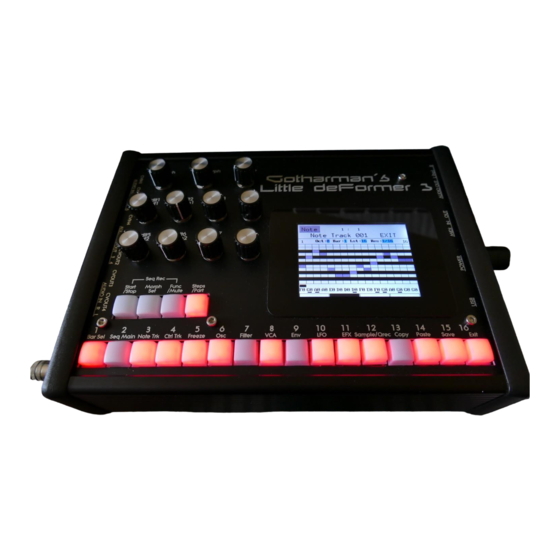
Gotharman Little deFormer 3 User Manual
Granular workstation
Hide thumbs
Also See for Little deFormer 3:
- Quick manual (122 pages) ,
- Update manual (103 pages) ,
- Update manual (9 pages)
Table of Contents
Advertisement
Quick Links
Advertisement
Table of Contents



Need help?
Do you have a question about the Little deFormer 3 and is the answer not in the manual?
Questions and answers